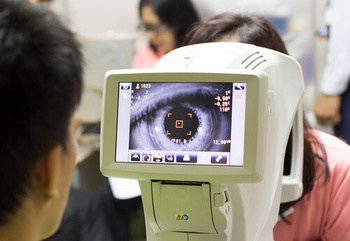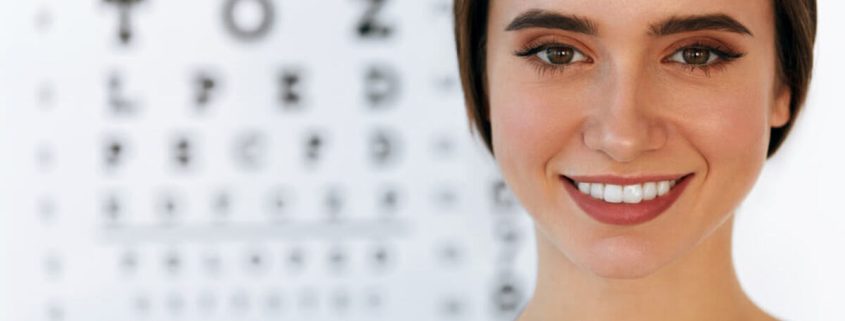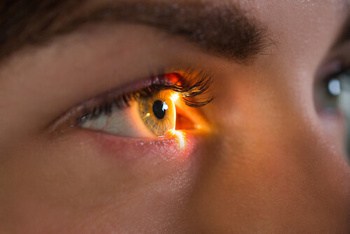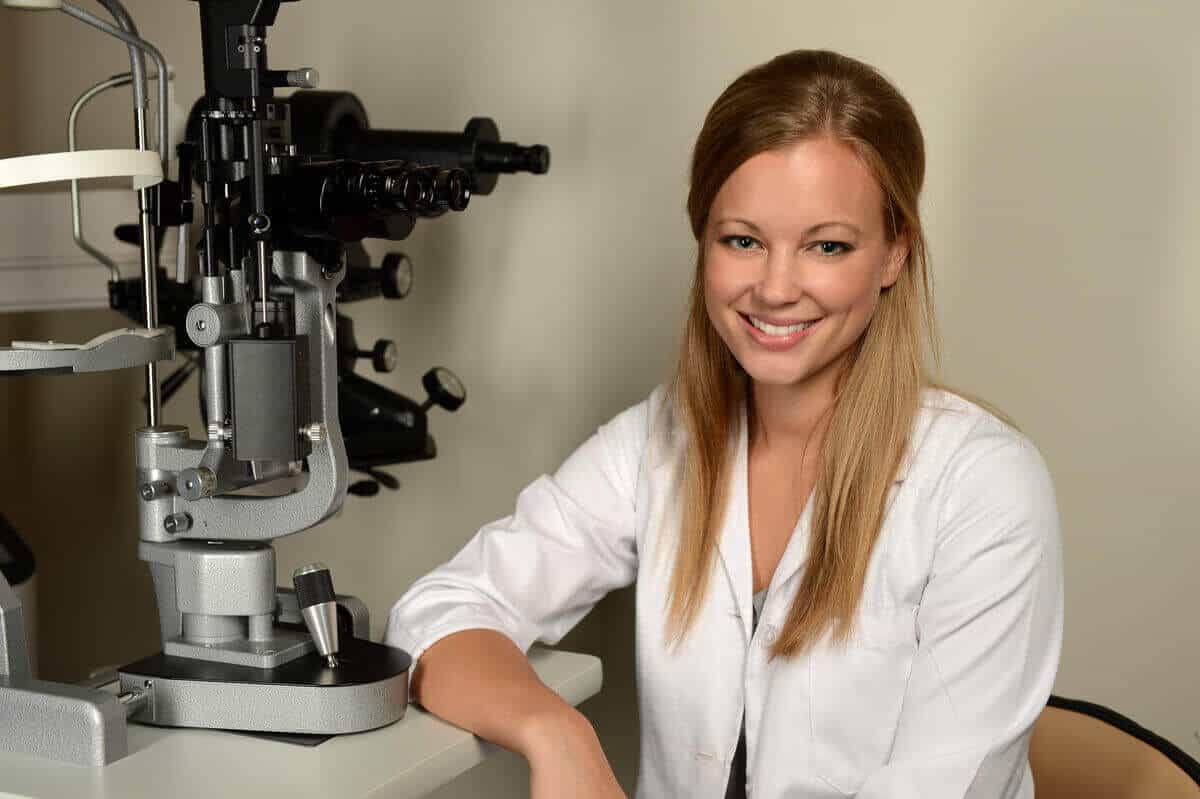Understanding Glaucoma: Key Risk Factors and Management
Glaucoma, a complex eye condition, presents a significant global health challenge, including in Australia. This post seeks to provide a comprehensive understanding of glaucoma risk factors, its different forms, such as primary open-angle glaucoma and angle closure glaucoma, and effective strategies for its treatment. We will explore key aspects such as normal eye pressure, the pivotal role of the optic nerve in glaucoma, methods of diagnosis, and the importance of comprehending intraocular pressure.
What is Glaucoma?
Glaucoma is a condition affecting the optic nerve, responsible for connecting the eye and the brain, resulting in damage. It is frequently associated with an accumulation of pressure within the eye. If left undetected and untreated, glaucoma can culminate in vision impairment.
Detailed Look at Types of Glaucoma
Primary Open Angle Glaucoma (POAG)
- Characteristics: It develops slowly and is often symptom-free until significant vision loss has occurred.
- Risk Factors: Age (over 40), family history, African or Hispanic ancestry, high eye pressure, and thin corneas.
Angle Closure Glaucoma
- Characteristics: This type can either be chronic or acute. The acute form is a medical emergency and includes symptoms like severe eye pain, nausea, and blurred vision.
- Risk Factors: Being over the age of 40, Asian descent, farsightedness, and a family history of angle closure glaucoma.
Normal-Tension Glaucoma
- Characteristics: Optic nerve damage and vision loss occur even though the eye pressure is within normal ranges.
- Risk Factors: Japanese ancestry, a history of systemic heart disease like irregular heart rhythm, and a family history of normal tension glaucoma.
Secondary Glaucoma
- Characteristics: Caused by another eye condition, disease, or trauma.
- Risk Factors: Eye injury, inflammation, certain medications (like corticosteroids), and conditions like cataracts and diabetes.
Paediatric Glaucoma
- Characteristics: Occurs in babies and children and can be congenital (present at birth) or develop later.
- Risk Factors: Genetic factors and certain medical conditions.
Additional Risk Factors for Glaucoma
While we have covered several risk factors associated with different types of glaucoma, there are additional factors worth noting:
 Eye Anatomy: People with certain optic nerve head characteristics are at increased risk.
Eye Anatomy: People with certain optic nerve head characteristics are at increased risk.- Corneal Thickness: A thinner cornea can increase the risk of glaucoma.
- High Myopia: Severe nearsightedness is linked to an increased risk of glaucoma.
- Steroid Use: Prolonged use of corticosteroid medications can elevate eye pressure.
- Obstructive Sleep Apnea: A link has been observed between obstructive sleep apnea syndrome and an increased risk of glaucoma.
Symptoms of Different Types of Glaucoma
Primary Open-Angle Glaucoma (POAG)
- Gradual Loss of Peripheral Vision: This usually occurs in both eyes and is often unnoticed until significant vision loss has happened.
- Tunnel Vision: In the advanced stages, you may have tunnel vision, where you can see only objects straight ahead.
Acute Angle-Closure Glaucoma (Narrow Angle Glaucoma)
- Severe Eye Pain: A rapid increase in intraocular pressure can cause intense pain.
- Nausea and Vomiting: Often accompanying severe eye pain.
- Sudden Visual Disturbance: Especially in low light conditions.
- Blurred Vision: A sudden, noticeable reduction in vision clarity.
- Halos Around Lights: Seeing rainbow-coloured circles around bright lights.
- Redness of the Eye: The eye may appear red and feel swollen.
Normal-Tension Glaucoma
- Slow Vision Loss: Similar to POAG, but occurs even with normal eye pressure.
- Peripheral Vision Loss: Typically the first sign, like in POAG.
Secondary Glaucoma
- Symptoms Vary: Depending on the underlying cause, such as inflammation, injury, or diabetes.
- Eye Pain and Redness: Often associated with the cause of secondary glaucoma.
Paediatric Glaucoma
- Cloudy Eyes: The cornea becomes cloudy due to high eye pressure.
- Excessive Tearing: More tearing than normal.
- Sensitivity to Light: The child might be extremely sensitive to light.
- Enlarged Eyes: Because of increased pressure, the eyes might appear larger.
Importance of Recognising Symptoms
- Subtle Onset: Many forms of glaucoma begin with no noticeable symptoms, which is why regular eye examinations are crucial, especially if you’re at high risk.
- Rapid Symptoms Warrant Immediate Attention: Symptoms like severe eye pain, nausea, and blurred vision require urgent medical attention as they might indicate acute angle-closure glaucoma, which is a medical emergency.
Steps in Diagnosing Glaucoma
Comprehensive Eye Examination
The initial step in diagnosing glaucoma is a comprehensive eye examination, encompassing:
- Visual Acuity Test: This assessment evaluates visual acuity across different distances, gauging the quality of your vision.
- Visual Field Test: Assesses peripheral (side) vision, which is often the first to be affected by glaucoma.
Measurement of Intraocular Pressure (Tonometry)
- Tonometry: Measures the pressure inside the eye. Elevated pressure is a significant risk factor for glaucoma, but glaucoma can occur even at normal pressure levels.
Examination of the Angle in the Eye (Gonioscopy)
- Gonioscopy: This entails assessing the angle at which fluid drains from the eye, known as the eye’s drainage angle. This test helps distinguish between open-angle and angle-closure glaucoma.
Inspection of the Optic Nerve (Ophthalmoscopy)
- Ophthalmoscopy: The doctor examines the shape and colour of the optic nerve. A cupped or damaged optic nerve may indicate glaucoma.
Imaging Tests
 Advanced imaging technologies can provide detailed images of the optic nerve and the internal structures of the eye. These include:
Advanced imaging technologies can provide detailed images of the optic nerve and the internal structures of the eye. These include:
- Optical Coherence Tomography (OCT): This creates a cross-sectional picture of the retina and can measure the thickness of the optic nerve fibre layer.
- Scanning Laser Polarimetry (GDx): Measures the thickness of the nerve fibre layer.
- Heidelberg Retina Tomography (HRT): Produces a three-dimensional image of the optic nerve.
Pachymetry
- Pachymetry: Measures corneal thickness. Thinner corneas can be a risk factor for glaucoma.
Visual Field Test
- Automated Perimetry: Assesses any visual field loss or blind spots, which can indicate glaucoma damage.
Frequency of Testing
For those at higher risk of glaucoma, such as individuals with a family history of the disease, those of African or Asian descent, and older adults, more frequent and detailed examinations are recommended.
Challenges in Diagnosis
- Variability of Symptoms: In its early stages, glaucoma often presents no symptoms.
- Interpretation of Results: Diagnosing glaucoma is not solely about high eye pressure; it requires a comprehensive understanding of various test results.
Management Strategies for Glaucoma
Medications
The primary goal of glaucoma medications is to lower intraocular pressure (IOP) to prevent damage to the optic nerve. Medications for this purpose are typically available as eye drops and less frequently as oral medications.
- Prostaglandin Analogues: Increase outflow of the fluid in your eye (aqueous humour), thereby reducing eye pressure.
- Beta-Blockers: Minimise the excessive fluid production in the eye to promote optimal ocular health.
- Alpha Agonists: Reduce the production of aqueous humour and increase drainage.
- Carbonic Anhydrase Inhibitors: Decrease fluid production in the eye.
- Rho Kinase Inhibitors: Increase the outflow of fluid from the eye.
Laser Therapy
Laser treatments are often used in conjunction with medications. The type of laser treatment used depends on the type of glaucoma and the specific needs of the patient.
- Trabeculoplasty: Used for open-angle glaucoma to increase fluid drainage.
- Iridotomy: Used for angle-closure glaucoma to create a small hole in the iris, allowing for fluid flow.
Surgical Procedures
In cases where medications and laser therapy are not effective, surgery might be necessary.
- Trabeculectomy: Creates a new drainage path for aqueous humour.
- Drainage Implants: Small devices placed in the eye to increase fluid drainage.
- Minimally Invasive Glaucoma Surgery (MIGS): Less invasive surgeries that have a lower risk of complications.
Regular Monitoring and Follow-Up
 Managing glaucoma requires continuous monitoring and follow-up visits with an eye care professional. These visits typically include:
Managing glaucoma requires continuous monitoring and follow-up visits with an eye care professional. These visits typically include:
- Measuring Intraocular Pressure: To ensure that it stays within a safe range.
- Examining the Optic Nerve: To check for further damage.
- Visual Field Testing: To detect changes in peripheral vision.
- Optic Nerve Imaging: To monitor changes over time.
Lifestyle Adjustments
Doctors often recommend patients with glaucoma adopt specific lifestyle modifications to effectively manage their condition.
- Regular Exercise: Can help reduce eye pressure.
- Healthy Diet: A balanced diet can support overall health and possibly benefit eye health.
- Protecting the Eyes: Using protective eyewear to prevent injuries and avoiding activities that can elevate eye pressure.
Patient Education and Support
Understanding glaucoma and being actively involved in treatment can improve outcomes.
- Educational Resources: Learning about glaucoma and its management.
- Support Groups: Connecting with others who have glaucoma for support and advice.
Complementary Therapies
While not a replacement for traditional treatment, complementary therapies may support overall well-being.
- Mindfulness and Stress Reduction: Can help in coping with the condition.
- Nutritional Supplements: While not yet proven, some believe certain supplements may support eye health.
Challenges in Management
- Adherence to Treatment: Consistently following the treatment plan is crucial, yet can be challenging for many patients.
- Monitoring Progression: Regularly assessing the effectiveness of treatment and making necessary adjustments.
Strategies for Preventing Glaucoma
Regular Eye Examinations
- Importance: Regular eye exams are paramount in the early detection of glaucoma, offering the best means to safeguard against vision loss.
- Frequency: The recommended frequency varies based on age, ethnic background, and family history. Generally, it’s advisable for adults to have a comprehensive eye exam every 1-2 years.
Know Your Family History
- Understanding Genetics: A family history of glaucoma increases your risk. Knowing your family’s eye health history can help you and your eye doctor determine your risk level.
Exercise Regularly
- Physical Activity: Moderate, regular exercise may help prevent glaucoma by reducing eye pressure. Consult with a healthcare provider before starting any new exercise regimen.
Protect Your Eyes
- Eye Protection: Eye injuries can lead to traumatic glaucoma. Wearing protective eyewear during sports and certain activities can help prevent these injuries.
Awareness of Other Health Conditions
- Managing Health Issues: Conditions like diabetes and high blood pressure can affect your risk for glaucoma. Proper management of these conditions is essential.
Be Cautious with Corticosteroids
- Medication Monitoring: Long-term use of corticosteroids can increase the risk of secondary glaucoma. Use these medications only as directed by a healthcare professional.
Healthy Diet and Lifestyle
- Dietary Choices: While no diet can prevent glaucoma, a healthy diet rich in fruits and vegetables, particularly leafy greens, may benefit overall eye health.
- Smoking Cessation: Smoking may increase the risk of eye diseases. Quitting smoking is beneficial for eye health and overall well-being.
Frequently Asked Questions About Glaucoma
Can Glaucoma Be Cured?
- Answer: There is currently no cure for glaucoma. However, with early diagnosis and proper treatment, it’s possible to effectively manage the condition and prevent further vision loss.
Is Glaucoma Only Found in Older Adults?
- Answer: Although glaucoma is more prevalent among the elderly, especially individuals aged 60 and above, it can manifest at any age, albeit rarely, even in infancy and childhood.
Are There Any Warning Signs of Glaucoma?
- Answer: Most types of glaucoma develop without early symptoms. The first noticeable sign is often a loss of peripheral (side) vision, which can go unnoticed until late in the disease.
How Often Should I Get Tested for Glaucoma?
- Answer: The frequency of testing depends on your age, ethnic background, family history, and other risk factors. Generally, adults should have a comprehensive eye exam every 1-2 years.
Does Glaucoma Cause Complete Blindness?
- Answer: If left untreated, glaucoma can lead to complete blindness. However, with early detection and proper treatment, the risk of severe vision loss can be significantly reduced.
Can Lifestyle Changes Reduce the Risk of Glaucoma?
- Answer: While lifestyle changes alone can’t prevent glaucoma, they can help manage risk factors. Regular exercise, a healthy diet, eye protection, and avoiding smoking can contribute to overall eye health.
Is Glaucoma Treatment Expensive?
- Answer: The cost of glaucoma treatment can vary depending on the type and stage of the disease, the treatment method, and healthcare coverage. Medications, laser treatments, and surgeries have different costs.
Can I Drive if I Have Glaucoma?
- Answer: Many people with glaucoma can continue to drive safely. However, as the disease progresses, particularly if peripheral vision is affected, it may become unsafe to drive. Regular vision tests are important.
Is Glaucoma Genetic?
- Answer: Glaucoma can be influenced by genetics. If you have a family history of this condition, your risk of developing it increases. In certain cases, genetic testing may be advised.
Can I Prevent Glaucoma with Eye Exercises or Vitamins?
- Answer: There is no scientific evidence that eye exercises or vitamins can prevent glaucoma. However, maintaining a healthy lifestyle and diet can support overall eye health.
What sets Open-Angle and Angle-Closure Glaucoma apart?
- Answer: Open-angle glaucoma, the most common type, involves a gradual clogging of the drainage canals, leading to increased eye pressure. Angle-closure glaucoma involves a sudden blockage of these canals, often leading to a rapid increase in pressure.
Can Glaucoma Be Detected Without Going to the Eye Doctor?
- Answer: No! A comprehensive eye exam conducted by a professional eye care specialist is crucial for reliable detection of glaucoma. The most effective way to catch glaucoma early is through regular eye examinations.
Conclusion
Gaining insight into the risk factors associated with glaucoma is crucial for early detection and effective management of this condition. The keys to preventing or managing glaucoma lie in regular eye examinations, having an awareness of one’s family medical history, and maintaining a healthy lifestyle. Remember, early detection and timely treatment are paramount in safeguarding your vision from the detrimental effects of glaucoma.
Reach out to us now at (03) 9070 3580 to arrange an eye examination and take proactive steps to safeguard the health of your eyes.
Note: Any surgical or invasive procedure carries risks. Before proceeding, you should seek a second opinion from an appropriately qualified health practitioner.
References:
- https://www.mayoclinic.org/diseases-conditions/glaucoma/symptoms-causes/syc-20372839
- https://www.ncbi.nlm.nih.gov/pmc/articles/PMC5383456/


 Eye Anatomy: People with certain optic nerve head characteristics are at increased risk.
Eye Anatomy: People with certain optic nerve head characteristics are at increased risk.



Leave a Reply
Want to join the discussion?Feel free to contribute!